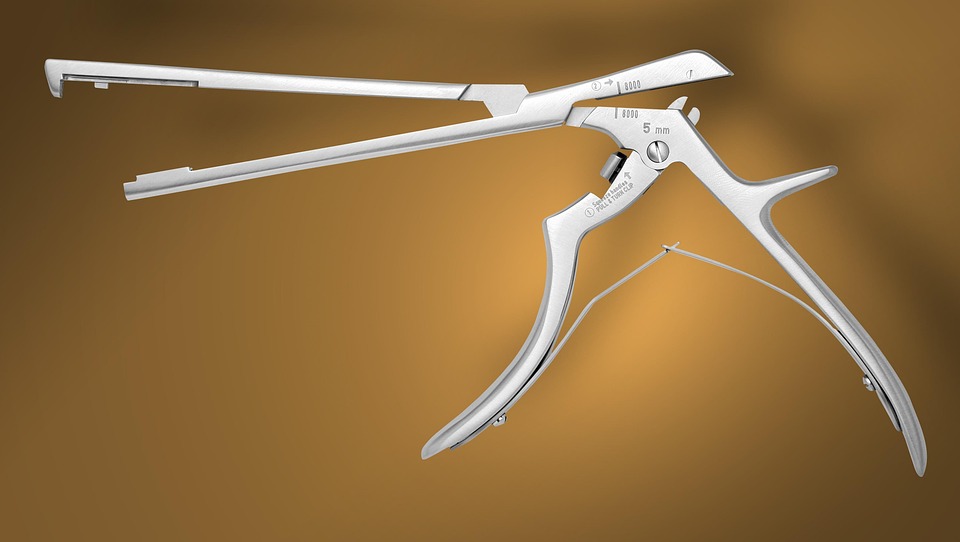The Synergy of Mechanics and Electronics: Unveiling the World of Mechatronics
Introduction
Mechatronics is an interdisciplinary field that combines mechanics, electronics, computer science, and control engineering to design and create intelligent systems and products. As the world continues to evolve through technological advancements, mechatronics plays a crucial role in many industries, including automotive, aerospace, robotics, and manufacturing. This article explores the synergy between mechanics and electronics in the realm of mechatronics, highlighting its history, applications, and future prospects.
1. Historical Background of Mechatronics
The term "mechatronics" was first coined in Japan in the 1960s to describe the integration of mechanical engineering and electronic systems. The advent of digital electronics revolutionized machinery, enabling the development of more complex and intelligent devices. Early examples include simple automated systems and products that incorporated sensors and actuators, which laid the groundwork for today’s sophisticated mechatronic systems.
1.1 Evolution of Mechatronic Systems
The following decades saw a rapid technological advancement:
- 1970s: Introduction of microcontrollers and programmable logic controllers (PLCs).
- 1980s: The emergence of CAD software revolutionized mechanical design.
- 1990s: Advances in communication protocols and networks propelled collaborative mechatronic systems.
- 2000s to Present: The rise of the Internet of Things (IoT) expanded the connectivity of mechatronic devices, enabling real-time monitoring and control.
1.2 Milestones in Mechatronics
Key milestones include:
- Automated Manufacturing Systems: High precision robotics for assembly lines.
- Smart Devices: Home appliances like washing machines that incorporate sensors and programmable features.
- Autonomous Vehicles: Integration of complex sensors and algorithms for navigation and control.
2. Fundamental Components of Mechatronics
Mechatronic systems typically consist of several core components that work synergistically to achieve desired functionalities:
2.1 Mechanical Systems
The mechanical aspect provides structure and form to mechatronic systems. Key elements include:
- Actuators: Devices that convert energy into motion, such as motors and hydraulic systems.
- Mechanisms: Systems that transmit motion, including gears, levers, and linkages.
- Structures: Physical elements that provide support and housing for components.
2.2 Electronic Systems
Electronics provide the control and interface for mechatronic systems:
- Sensors: Devices that detect environmental conditions or system states—examples include temperature sensors, pressure sensors, and proximity sensors.
- Microcontrollers: Integrated circuits that execute control algorithms and process input from sensors.
- Power Supplies: Provide the necessary energy to operate electronic components.
2.3 Control Systems
Control systems are critical in managing the interactions between mechanical and electronic elements:
- Feedback Mechanisms: Systems that adjust operation based on output data.
- Control Algorithms: Mathematical frameworks that dictate system behavior. Common techniques include PID (Proportional-Integral-Derivative) control and fuzzy logic.
3. The Interdisciplinary Nature of Mechatronics
One of the defining characteristics of mechatronics is its interdisciplinary approach. Successful mechatronic design requires knowledge from multiple fields:
3.1 Mechanical Engineering
Understanding mechanics helps in designing robust and efficient mechanical components. Important principles include:
- Statics and Dynamics: Governing equations that can predict system behavior under various conditions.
- Material Science: Knowledge of material properties aids in selecting components that can withstand operational stresses.
3.2 Electrical Engineering
Knowledge of electrical principles is required for designing electronic interfaces. Key concepts include:
- Circuit Design: The ability to create efficient circuits for powering and controlling systems.
- Signal Processing: Techniques for interpreting data from sensors and controlling actuators.
3.3 Computer Science
Programming and computational logic are essential in developing smart systems. Topics of interest include:
- Algorithms: Fundamental principles for designing efficient solutions.
- Embedded Systems: Specialized computer systems designed for specific tasks within a mechatronic system.
3.4 Control Engineering
Control engineering focuses on the behavior of dynamic systems. Key components include:
- Modeling and Simulation: Creating mathematical models to simulate system behavior and design optimal control strategies.
- Stability Analysis: Ensuring that the mechatronic system behaves predictably under varying conditions.
4. Applications of Mechatronics
Mechatronics is at the forefront of modern technology, with wide-ranging applications across various sectors:
4.1 Robotics
Robotic systems exemplify the integration of mechatronic principles. Applications range from industrial robots in manufacturing to service robots in healthcare. Key technologies include:
- Autonomous Navigation: Utilizing sensors and algorithms for self-guided movement.
- Artificial Intelligence: Enhancing robots with machine learning for adaptive behavior.
4.2 Automotive Systems
Modern vehicles are increasingly reliant on mechatronics for improved performance and safety features:
- Advanced Driver-Assistance Systems (ADAS): Integrating sensors, cameras, and algorithms for features like lane departure warnings and adaptive cruise control.
- Electric and Hybrid Vehicles: Utilizing electric motors and complex control systems for efficient energy management.
4.3 Aerospace Engineering
In aerospace, mechatronics is vital for the development of advanced aircraft and spacecraft systems:
- Control Surfaces: Mechanisms that adjust for aerodynamics, often controlled by electronic systems.
- Robotic Arms for Space Applications: Designed to perform delicate tasks in zero-gravity environments.
4.4 Manufacturing Automation
Automation in manufacturing relies heavily on mechatronic systems to increase efficiency:
- CNC Machines: Computer-controlled machining tools that produce parts with high precision.
- Assembly Line Robotics: Automated robots that can perform repetitive tasks and improve production rates.
4.5 Biomedical Devices
Mechatronics has revolutionized the healthcare field through innovative medical devices:
- Robotic Surgery: Systems that enable high-precision operations with minimal invasiveness.
- Assistive Technologies: Devices designed for individuals with disabilities to enhance daily living.
5. Challenges in Mechatronic Design
Despite its numerous advantages, mechatronic design faces various challenges:
5.1 Complexity of Integration
Integrating mechanical and electronic components can be difficult due to the need for compatibility in design and operation.
5.2 Rapid Technological Changes
The pace of technological advancement requires continuous learning and adaptation, making it challenging for engineers to stay up-to-date.
5.3 Cost Constraints
Implementing advanced mechatronic systems often comes with high costs, making it essential to balance functionality with budget considerations.
5.4 Reliability and Safety
Ensuring the reliability and safety of mechatronic systems is especially critical in applications such as aerospace and medical devices, where failures can have severe consequences.
6. Future Trends in Mechatronics
As technology continues to evolve, so too does the field of mechatronics. Several trends are emerging:
6.1 Smart Manufacturing
The Industry 4.0 revolution highlights the significance of smart factories. Key features include:
- IoT Connectivity: Mechatronic devices will increasingly integrate with cloud-based systems for data sharing and analysis.
- Autonomous Systems: Development of machines that can operate independently, reducing the need for human intervention.
6.2 Enhanced AI Integration
The application of artificial intelligence in mechatronics will lead to more adaptive and intelligent systems:
- Machine Learning: Enhancing predictive maintenance and system optimization through data analysis.
- Cognitive Robotics: Developing robots that can understand and adapt to dynamic environments.
6.3 Sustainability Efforts
There is a growing emphasis on sustainable practices within mechatronics to address environmental concerns. Developments include:
- Energy-Efficient Designs: Creating systems that minimize energy consumption while maintaining performance.
- Recycling and Reusability: Designing mechatronic systems with end-of-life considerations in mind to promote recycling.
Conclusion
The integration of mechanics and electronics in mechatronics has transformed the way we interact with technology. From robotics to smart manufacturing, the synergy of these fields leads to innovative solutions that enhance efficiency, safety, and convenience. As we look toward the future, continued advancements in mechatronics will undoubtedly reshape industries, making it an exciting field for engineers and technologists alike.
References
- Draft, K. (2022). Mechatronics: Principles and Applications. [Modern Footnote1].
- Smith, T. R. (2021). The Evolution of Robotic Systems. [Modern Footnote2].
- Johnson, L. (2023). Advancements in Autonomous Vehicles. [Modern Footnote3].
- Peterson, A. (2020). Sustainable Practices in Mechatronics. [Modern Footnote4].
- Garcia, R. & Chen, M. (2022). AI and Robotics: The Future of Mechatronics. [Modern Footnote5].
This article serves as an introduction to the field of mechatronics, showcasing the crucial interplay between mechanics and electronics in designing intelligent systems that influence every facet of modern life.


























Add Comment